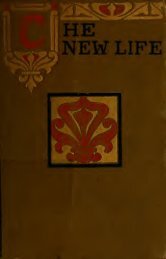The Case For Christ
The Case for Christ records Lee Strobel's attempt to "determine if there's credible evidence that Jesus of Nazareth really is the Son of God." The book consists primarily of interviews between Strobel (a former legal editor at the Chicago Tribune) and biblical scholars such as Bruce Metzger. Each interview is based on a simple question, concerning historical evidence (for example, "Can the Biographies of Jesus Be Trusted?"), scientific evidence, ("Does Archaeology Confirm or Contradict Jesus' Biographies?"), and "psychiatric evidence" ("Was Jesus Crazy When He Claimed to Be the Son of God?"). Together, these interviews compose a case brief defending Jesus' divinity, and urging readers to reach a verdict of their own.
The Case for Christ records Lee Strobel's attempt to "determine if there's credible evidence that Jesus of Nazareth really is the Son of God." The book consists primarily of interviews between Strobel (a former legal editor at the Chicago Tribune) and biblical scholars such as Bruce Metzger. Each interview is based on a simple question, concerning historical evidence (for example, "Can the Biographies of Jesus Be Trusted?"), scientific evidence, ("Does Archaeology Confirm or Contradict Jesus' Biographies?"), and "psychiatric evidence" ("Was Jesus Crazy When He Claimed to Be the Son of God?"). Together, these interviews compose a case brief defending Jesus' divinity, and urging readers to reach a verdict of their own.
Create successful ePaper yourself
Turn your PDF publications into a flip-book with our unique Google optimized e-Paper software.
people in the gospels and Acts-some individually, some in groups,<br />
sometimes indoors, sometimes outdoors, to softhearted people like<br />
John and skeptical people like Thomas," he began.<br />
At times they touched Jesus or ate with him, with the texts<br />
teaching that he was physically present. <strong>The</strong> appearances<br />
occurred over several weeks. And there are good reasons to trust<br />
these accounts-for example, they're lacking in many typical<br />
mythical tendencies." "Can you enumerate these appearances for<br />
me?"<br />
From memory, Habermas described them one at a time. Jesus<br />
appeared<br />
* to Mary Magdalene, in John 20:10-18;<br />
* to the other women, in Matthew 28:8-10;<br />
* to Cleopas and another disciple on the road to Emmaus, ul Luke<br />
24:13-32;<br />
* to eleven disciples and others, in Luke 24:33-49;<br />
* to ten apostles and others, with Thomas absent, in John<br />
20:1923; * to Thomas and the other apostles, in John 20:26-30;<br />
* to seven apostles, in John 21:1-14;<br />
* to the disciples, in Matthew 28:16-20.<br />
* And he was with the apostles at the Mount of Olives before his<br />
ascension, in Luke 24:50-52 and Acts 1:4-9.<br />
"It's particularly interesting," Habermas added, "that C. H.<br />
Dodd, the Cambridge University scholar, has carefully analyzed<br />
these appearances and concluded that several of them are based on<br />
especially early material, including Jesus' encounter with the<br />
women, in Matthew 28:8-10; his meeting with the eleven apostles,<br />
in which he gave them the Great Commission, in Matthew 28:16-20;<br />
and his meeting with the disciples, in John 20:19-23, in which he<br />
showed them his hands and side."<br />
Again, here was a wealth of sightings of Jesus. This was not<br />
merely a fleeting observance of a shadowy figure by one or two<br />
people. <strong>The</strong>re were multiple appearances to numerous people,<br />
several of the appearances being confirmed in more than one<br />
gospel or by the I Corinthians 15 creed.<br />
"Is there any further corroboration?" I asked.<br />
"Look at Acts," replied Habermas, referring to the New Testament<br />
book that records the launch of the church. Not only are Jesus'<br />
appearances mentioned regularly, but details are provided, and<br />
the theme of the disciples being a witness of these things is<br />
found in almost every context.


















